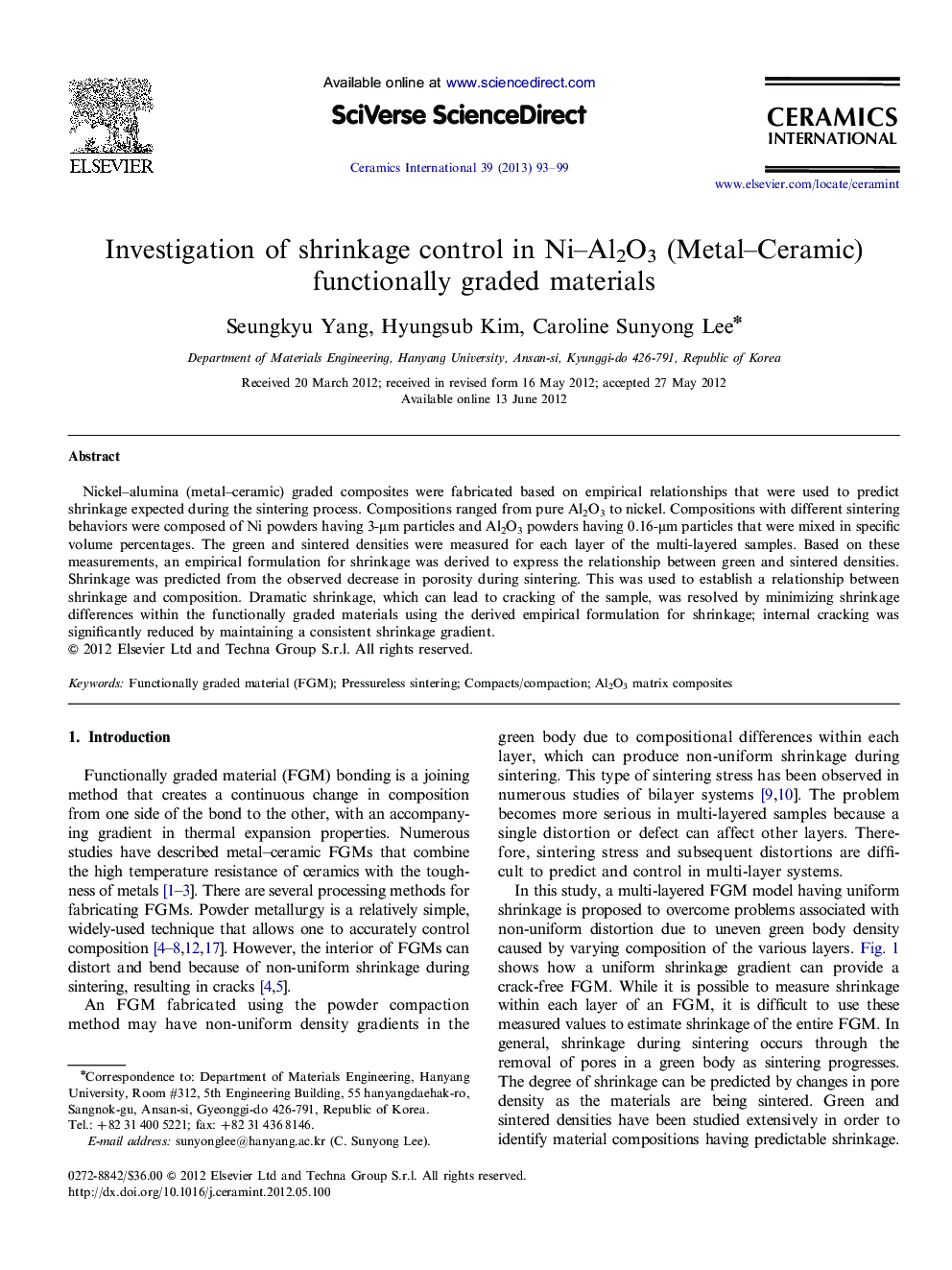| Article ID | Journal | Published Year | Pages | File Type |
|---|---|---|---|---|
| 1463438 | Ceramics International | 2013 | 7 Pages |
Nickel–alumina (metal–ceramic) graded composites were fabricated based on empirical relationships that were used to predict shrinkage expected during the sintering process. Compositions ranged from pure Al2O3 to nickel. Compositions with different sintering behaviors were composed of Ni powders having 3-μm particles and Al2O3 powders having 0.16-μm particles that were mixed in specific volume percentages. The green and sintered densities were measured for each layer of the multi-layered samples. Based on these measurements, an empirical formulation for shrinkage was derived to express the relationship between green and sintered densities. Shrinkage was predicted from the observed decrease in porosity during sintering. This was used to establish a relationship between shrinkage and composition. Dramatic shrinkage, which can lead to cracking of the sample, was resolved by minimizing shrinkage differences within the functionally graded materials using the derived empirical formulation for shrinkage; internal cracking was significantly reduced by maintaining a consistent shrinkage gradient.
